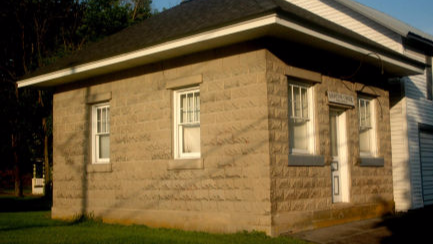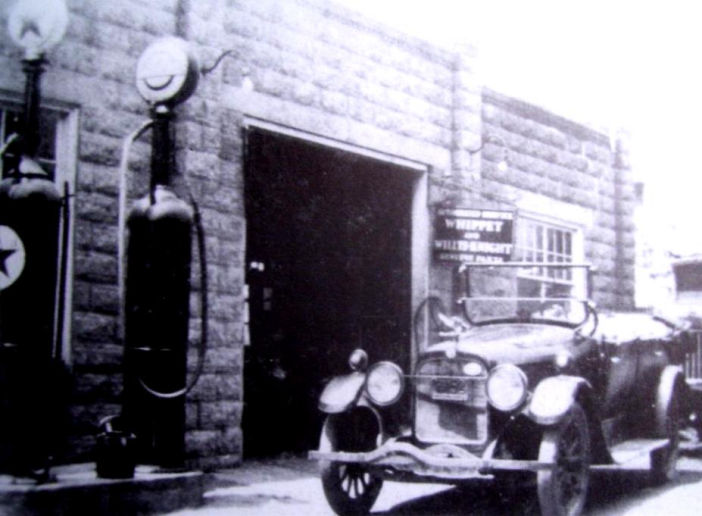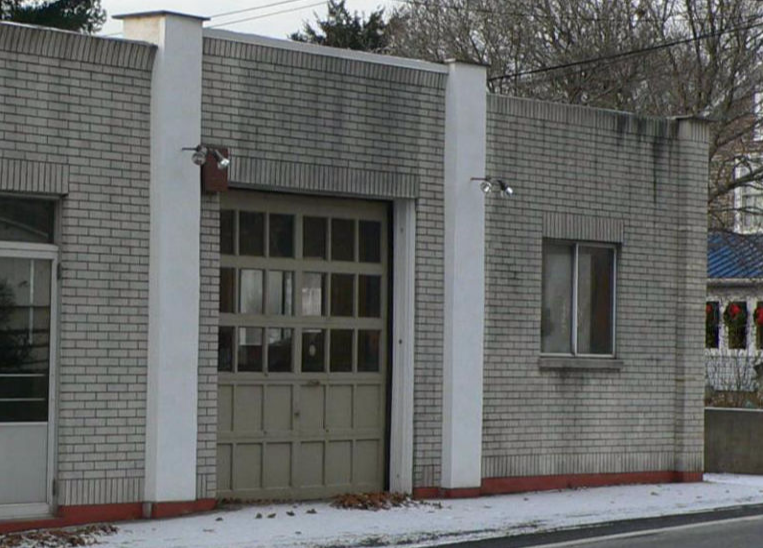

Formed concrete blocks with the surface texture of rough stone were widely used for building construction throughout the first quarter of the twentieth century. The common names for this building material include ornamental, rock-faced, mold-formed and rusticated concrete blocks. The latter being the most frequently used.
With a decreasing lumber supply, the improvement in the technique for producing Portland cement and increase in the cost of “real” masonry during this era, it was durable

and an economical alternative building material. It seems to have been despised by architects of the time with published descriptions like "depressing, distasteful, cheap and vulgar immitation". Despite the criticism from the elite, there were many, many buildings built in a short time to serve the growing middle class. The thousands of buildings I've seen, that still retain the original character of the rock-faced blocks, has proven that one of the few hand-made building materials in the 20th century doesn't deserve the disrespect of these “design professionals”. I've found it to add some sophistication to otherwise modest and mundane buildings. I've also seen grand buildings combining the rusticated blocks with other highly decorative cast stone details, like columns of porches and entrances or pediments over windows and doors. By the beginning of the depression, the popularity of this bulding material waned.
The blocks for many of these buildings could be manufactured on-site. There were block making machines that were quite portable and builders could haul them to the site with the other needed building materials. They were available in mail-order catalogs, including Sears, Roebuck and Co. so do-it-yourself folks of the period could even make them. These machines had interchangeable face plates to create the surface textures. In addition to the common rock-face, there were also plates to cast blocks with scrolls, wreaths and faceted edges.



Concrete, made of Portland cement, sand and gravel was hand mixed dry and then water was added. The damp mixture was than tamped into the form and pressed into a block. The best blocks were cured for 5 days while being kept slightly damp.
In residential construction, they were used to build some Cape and Bungalow style homes and many American Foursquares – all popular styles when these blocks were being used. These blocks were also used for foundations under frame and brick constructed homes as well.

During this period the automobile, now affordable to the general public, appeared in front of homes throughout the US. Many homeowners added detached garages built with these blocks, marketed as fireproof, to shelter their Model Ts. Car service stations and automotive repair shops sprang up during this period and are most commonly either built of structural terra cotta or these rusticated blocks. It was a popular building material for farm buildings. The blocks were also used for other commercial and public buildings during this period, including small apartment buildings, factories, offices, banks, schools and even a church or two.


The practice of blocks being cast on-site has no method for quality control. Improper proportions in the concrete mix, not thoroughly mixing the ingredients, too much or too little water and inadequate curing or aging has resulted in some significant failures of the face of the blocks. Individual blocks can be repaired by an experienced mason but the color will not likely be an exact match. If there is significant deterioration to individual blocks, beyond minor cracks, pitting or small spots of disintegration, then replacement may be needed. It can be a major effort to find salvaged blocks with the same pattern. There are some limited reproductions available but an exact match may not be possible.
If there has been deterioration to many of the blocks in large areas, the most common treatment has been to coat the whole exterior of the building with cement mortar. A stucco finish or the cement coating that imitates brickwork has been used extensively over the last 80 years or so. I've found so many that have been obscured by this method that I can't imagine how many more of these decorative block homes have been concealed.

Bill Kibbel is a consultant and an inspector of historic homes
& commercial buildings at Heritage Building Inspections.
Mobirise web creator - Go now